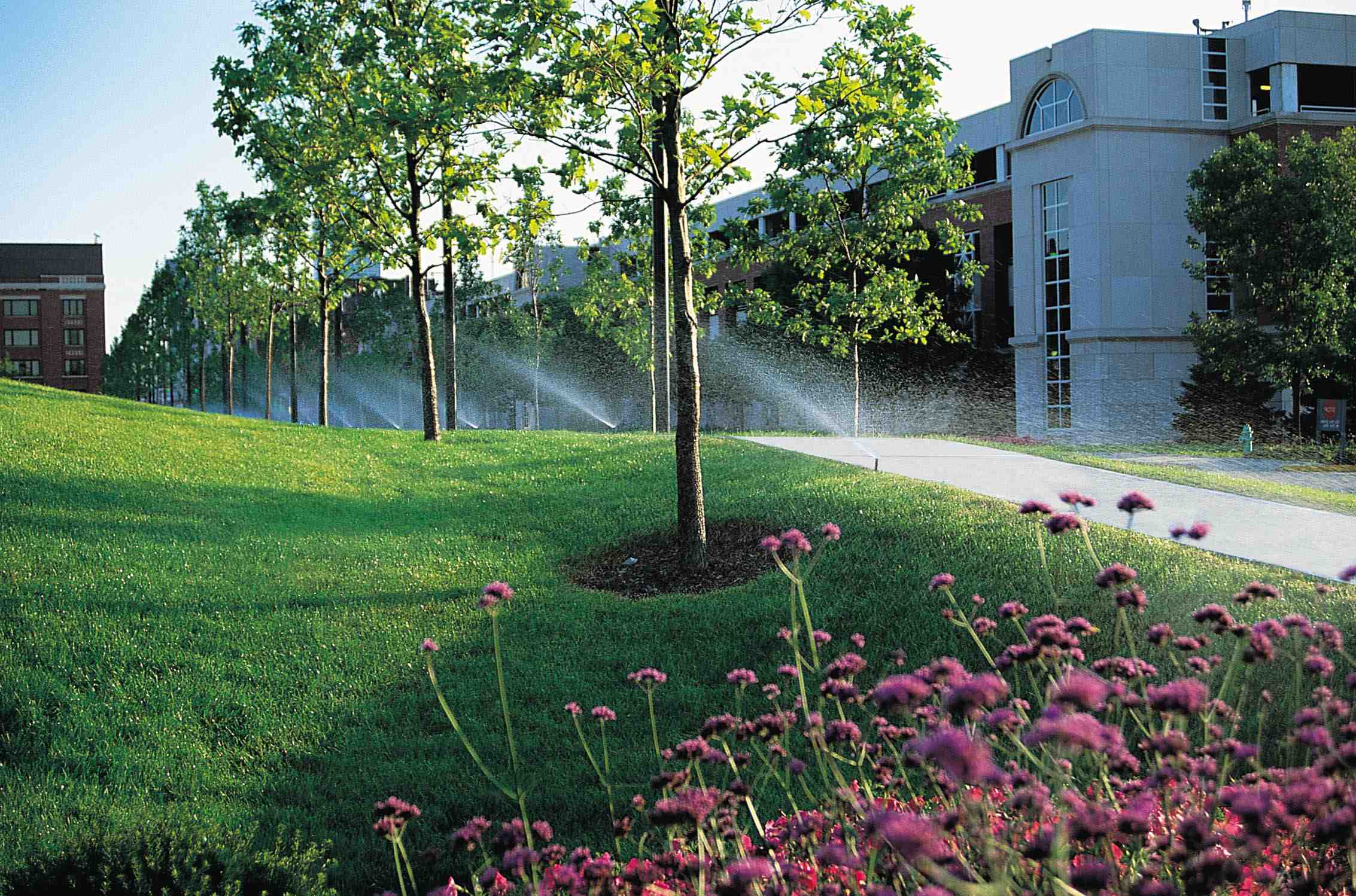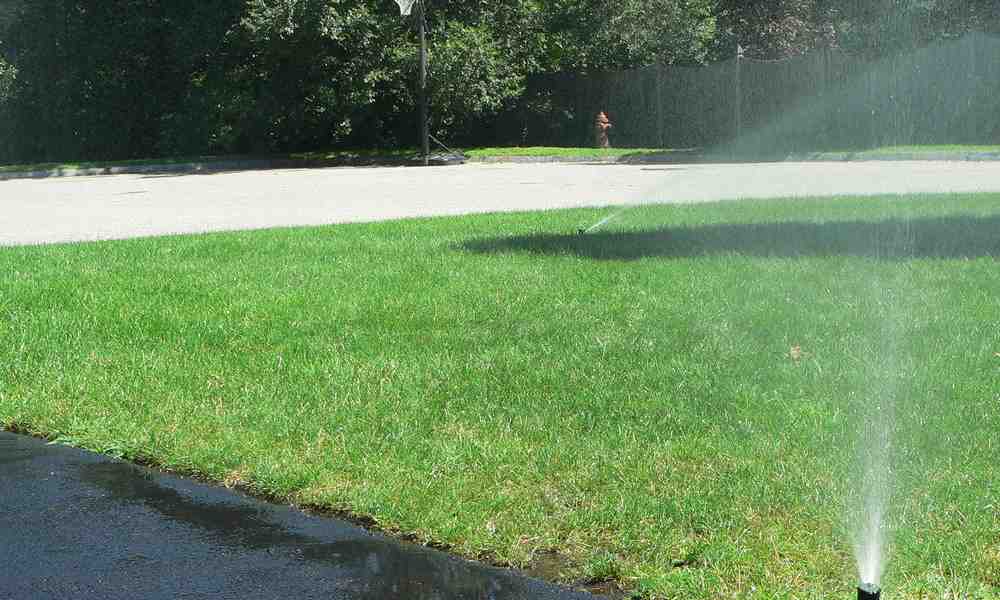Sprinkler Heads: Top 4 Types for Best Garden Results
Introduction
When it comes to keeping your lawn healthy and green, selecting the right sprinkler head is crucial. As the part of the system that actually disperses the water, getting it right can make a big difference in how your garden grows.
Here’s a quick breakdown to help you understand the ideal sprinkler head for your needs:
- Pop-up sprinklers: Best for lawns; they retract when not in use.
- Fixed sprinklers: Great for flower and shrub beds; they stay up.
- Rotary sprinklers: Ideal for large areas; they rotate to cover more ground.
- Bubblers: Perfect for small, specific spots; they release water gently at the base of plants.
Choosing the right type helps ensure efficient watering, which saves water and keeps your plants thriving. Whether you’re a homeowner or manage a large property, matching the right sprinkler head to your garden not only makes watering easier but also enhances the health of your landscape.

Types of Sprinkler Heads
Choosing the right sprinkler head is essential for efficient and effective garden irrigation. Each type serves a unique purpose and is suited for different areas of your garden. Let’s dive into the most common types:
Pop-up Sprinklers
Pop-up heads are the most popular choice for lawns. These sprinklers stay hidden below ground when not in use, which protects them from damage by lawnmowers, pets, or foot traffic. When activated, they rise to water the lawn. Pop-up sprinklers are ideal for large, open areas.
Example: The Rain Bird 1800 series offers various pop-up heights and adjustable nozzles, making them versatile for both residential and commercial use.
Rotary Sprinklers
Rotary sprinklers are perfect for larger lawns and gardens. They cover more ground by rotating and spraying water in a circular pattern. These sprinklers are efficient and distribute water evenly, reducing the risk of runoff.
Example: Rain Bird 5000 Series is highly recommended for its adjustable arc and check valve, ensuring even coverage and preventing water wastage.
Fixed Sprinklers
Fixed or shrub head sprinklers are ideal for watering flower beds and shrubs. They deliver water in a set pattern and do not move, making them perfect for areas with delicate plants that need gentle watering.
Example: The Rain Bird 1802FDS offers a full-circle pattern, ensuring consistent watering for flower beds.
Bubblers
Bubblers are designed for precise watering at the base of plants. They release water gently, making them ideal for trees, shrubs, and flower beds where deep root watering is necessary.
Example: Bubblers are perfect for small, specific spots, ensuring that water reaches the roots without causing soil erosion.
Choosing the right type helps ensure efficient watering, which saves water and keeps your plants thriving. Whether you’re a homeowner or manage a large property, matching the right sprinkler head to your garden not only makes watering easier but also enhances the health of your landscape.
Next, we’ll discuss how to choose the right sprinkler head based on your garden’s specific needs.
Choosing the Right Sprinkler Head
Choosing the right sprinkler head is crucial for effective garden irrigation. Here’s how to pick the best one for your garden:
Area Dimensions
First, consider the size and shape of the area you need to water. Different sprinkler heads cover varying ranges:
- Pop-up Sprinklers: Ideal for lawns. They can cover larger areas and retract when not in use.
- Rotary Sprinklers: Best for medium to large areas. They rotate to distribute water evenly.
- Fixed Sprinklers: Suitable for smaller, specific areas like flower beds or shrub zones.
Example: If you have a large lawn, a rotary sprinkler might be the best choice due to its extensive coverage.
Water Pressure
Water pressure significantly affects the performance of your sprinkler head. Low pressure can lead to uneven watering, while high pressure might cause misting and water waste.
- Pressure Regulators: Some sprinkler heads come with built-in pressure regulators to maintain consistent performance.
- Check Valves: Prevent water from seeping out when the system is off, maintaining pressure.
Tip: For areas with low water pressure, consider using Hunter MP rotator nozzles, which are designed to work efficiently under such conditions.
Plant Height
The height of your plants also plays a role in selecting the right sprinkler head:
- Taller Risers: Use these in shrub or flower beds to ensure water reaches over the plants.
- Shorter Pop-ups: Perfect for lawns where you need the sprinkler to stay low and out of the way of mowers.
Example: In areas with tall shrubs, a fixed sprinkler with a taller riser would be more effective.
By considering area dimensions, water pressure, and plant height, you can select the perfect sprinkler head for your garden’s needs. This ensures efficient watering and a thriving landscape.
Next, we’ll cover installation and maintenance tips to keep your sprinkler system running smoothly.
Installation and Maintenance of Sprinkler Heads
Installing and maintaining your sprinkler heads correctly is crucial for efficient and effective lawn irrigation. Here’s a simple guide to help you through the process.
Step-by-step Guide
- Plan Your Layout:
- Mark the locations where each sprinkler head will be installed.
- Ensure that the spacing provides overlapping coverage to avoid dry spots.
- Dig Trenches:
- Use a trenching shovel to dig trenches for the pipes.
- Trenches should be deep enough to place pipes below the frost line to prevent freezing.
- Install Pipes:
- Lay out the main supply pipe and connect it to your water source.
- Use PVC pipes for durability and secure them with fittings and glue.
- Attach Risers:
- Connect vertical risers to the main pipe where you marked the sprinkler locations.
- Ensure risers are the correct height for your plants or lawn.
- Connect Sprinkler Heads:
- Attach each sprinkler head to its riser.
- Ensure the heads are level with the ground to prevent damage.
- Test the System:
- Turn on the water supply and check for leaks.
- Adjust the spray pattern and distance on each sprinkler head as needed.
- Backfill Trenches:
- Once everything is working correctly, fill in the trenches with soil.
- Compact the soil to prevent settling over time.
DIY Tips
- Use Teflon Tape: Wrap Teflon tape around the threads of fittings to ensure a watertight seal.
- Check Water Pressure: Use a pressure gauge to ensure your water pressure is adequate for the sprinkler heads you’ve chosen.
- Regular Maintenance: Clean the nozzles regularly to prevent clogging and ensure even water distribution.
Professional Installation
While DIY installation can be rewarding, hiring a professional like P.J. Pappas offers several benefits:
- Expertise: Professionals have the knowledge to design a system tailored to your garden’s needs.
- Precision: Ensures that every component is installed correctly for optimal performance.
- Time-saving: Professionals can complete the installation quickly, saving you time and effort.
- Maintenance: Ongoing support to keep your system running smoothly year after year.
For example, P.J. Pappas, with over 37 years of experience, specializes in custom lawn irrigation systems. Their expertise ensures a precise and efficient installation, tailored to your garden’s unique requirements.
Next, we’ll answer some frequently asked questions about sprinkler heads to help you troubleshoot and optimize your system.
Frequently Asked Questions about Sprinkler Heads
What are the three main types of sprinkler heads?
- Spray Heads: These are best for small to medium-sized areas. They have a fixed spray pattern and are ideal for lawns and flower beds. For example, the Rain Bird 1802AP4PRS offers an adjustable pattern from 0–360° with a 4 ft range, perfect for precise watering.
- Rotary Heads: These heads rotate to cover larger areas. They are suitable for large lawns and gardens. The Rain Bird 5000 Series Rotor Sprinkler Head is a popular choice, offering adjustable arcs and a radius of 25 to 50 feet.
- Drip Emitters: These are used for targeted watering, such as in flower beds, vegetable gardens, or shrubs. They deliver water slowly and directly to the plant roots, minimizing water waste.
How do I replace a sprinkler head?
Tools Needed:
– Shovel
– Pliers
– New Sprinkler Head
– Teflon Tape
Steps:
- Turn Off the Water: Ensure the irrigation system is off to avoid getting soaked.
- Dig Around the Sprinkler Head: Use a shovel to carefully dig around the head, exposing the riser.
- Remove the Old Head: Unscrew the old sprinkler head from the riser using pliers if necessary.
- Wrap the Riser with Teflon Tape: This ensures a tight seal and prevents leaks.
- Install the New Head: Screw the new sprinkler head onto the riser.
- Test the New Head: Turn on the water to check for leaks and ensure proper operation.
- Fill the Hole: Once confirmed, fill the hole and compact the soil around the new head.
Tips:
– Check the manufacturer’s guide for specific instructions.
– Ensure the new head matches the type and specifications of the old one.
How do I choose the right sprinkler head for my garden?
Assessing Needs:
- Area Dimensions: Measure the size of the area you need to water. Larger areas may require rotary heads, while smaller areas can use spray heads.
- Water Pressure: Check your water pressure. Some heads, like the Hunter MP Rotators, work better with lower pressure.
- Plant Height: Consider the height of your plants. Taller risers or fixed heads may be necessary for shrubs and flower beds.
Matching Sprinkler to Garden Type:
- Lawns: Use pop-up spray heads or rotary heads for even coverage.
- Flower Beds: Fixed spray heads or drip emitters are ideal.
- Vegetable Gardens: Drip emitters ensure water reaches the roots without wetting the foliage, reducing the risk of disease.
Choosing the right sprinkler head is crucial for efficient irrigation. Matching the head type to your garden’s specific needs ensures your plants receive the right amount of water, reducing waste and promoting healthier growth.
Conclusion
Efficient irrigation is vital for maintaining a lush, healthy garden while conserving water. By selecting the right sprinkler head for each area of your garden, you ensure that your plants get the water they need without unnecessary waste. Whether you’re using pop-up spray heads for your lawn, fixed spray heads for your flower beds, or drip emitters for your vegetable garden, the right choice can make all the difference.
At P.J. Pappas Company, we specialize in designing and installing custom lawn irrigation systems tailored to your unique needs. Our expertise ensures that every component, from the timer to the sprinkler heads, is installed with precision for optimal performance. With over 37 years of experience, we stay updated with the latest technology and best practices to provide you with the most efficient and effective solutions.
We understand the complexities of irrigation systems and are dedicated to providing ongoing maintenance and support to keep your system running smoothly year after year. Trust us to transform your garden into an oasis with our professional, customized irrigation solutions.
For more information on our services, visit our irrigation systems page.
Choosing P.J. Pappas means peace of mind, knowing that your garden is in the hands of dedicated professionals who take pride in exceeding your expectations. Efficient irrigation is just a call away—let us help you make the best choice for your garden.



